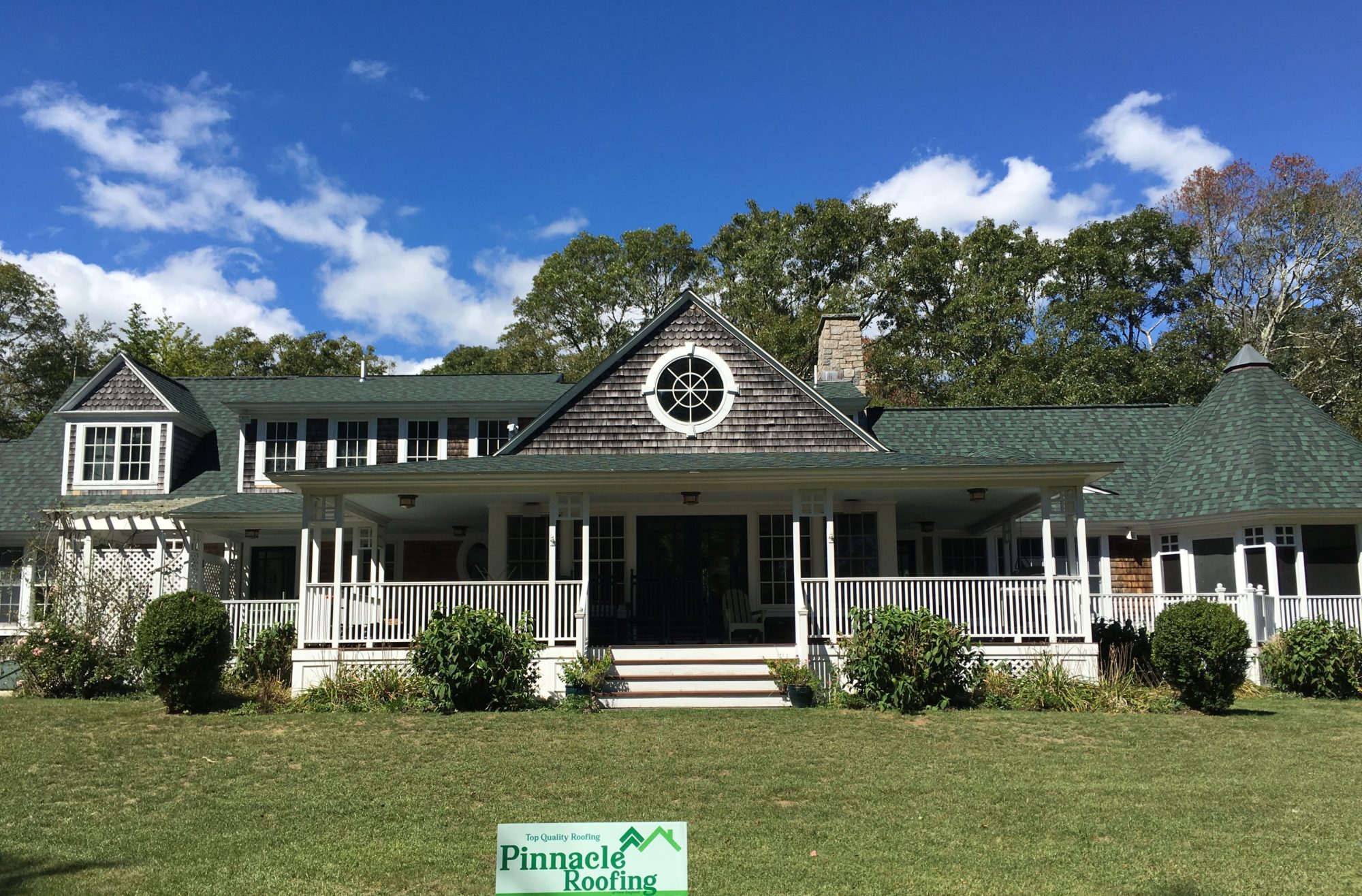Pinnacle Roof and Siding 401-268-7075 ALWAYS TOP QUALITY
Siding Options
Vinyl Siding

Vinyl siding is by far the leader. Vinyl siding is attractive due to its combination of durability, color options, and low cost which make it attractive to the budget-conscious homeowner.
There are many different profiles of vinyl: horizontal and vertical panels, dutch lap, shakes, shingles, board n batten, beaded, and fish scales or scallops. Vinyl siding sits alone at the top and continues to be one of the best siding options available. Below are the pros and cons of vinyl siding:
PROS
- Vinyl siding is durable and typically is under warranty for 30-40 years after installation
- The color options of vinyl are endless, with hundreds of color palettes to choose from
- It is versatile and can be textured like wood without the disadvantages of decay or termites
- Simple and easy to clean, vinyl siding just needs a power hose and some water
- Wide range of quality of the vinyl materials, you can even get insulated vinyl if you live in colder climates to increase energy efficiency.
- Insulated vinyl siding has the potential to raise your energy efficiency R value from 2 – 5.5!
- Finally, vinyl siding in probably the cheapest option when upgrading your exterior siding
CONS
- Although it is water-resistant it is not waterproof. Poor installation can lead to water seeping behind the paneling which leads to mold and other issues
- It is known to warp and bend under extreme weather conditions of both heat & cold
- The color you choose is permanent. Unlike other siding that can be repainted different colors, vinyl siding color choice is here to stay.
- Compared to something like brick siding; hail, baseballs, tree limbs, etc … can leave dents and gashes in the side of your home.
Wood Siding

Everyone likes wood, this type of siding can add a natural & beautiful exterior to your house. The changing colors and tones of wood instantly make a home feel warm and inviting. There are several species of wood to choose from such as: spruce, pine, fir, cedar, and redwood.
Apart from the kind of wood you choose you will also have the choice of 4 different profiles: bevel (clapboard), shakes or shingles, board and batten, or engineered wood. This type of siding is particularly dominant in the west, and continues to be a top choice for homeowners with its classic & timeless look. Below are the pros and cons of wood siding:
PROS
- Wood has the advantage of being easily replaced in small quantities if damaged. Other types of siding have to replace whole panels and sides
- No question this is the most green siding you can find on the market.
- Wood can be stained and painted in limitless colors, there are no bounds
- Wood siding has a higher R-Value than most of ~.8 making it more energy efficient
- It’s lightweight feature makes it faster and easier to be installed. Reducing overall labor cost and time
CONS
- Can be stained/painted limitless colors, but this also is a drawback. It must be maintained
- Damage to wood can come from insects or water. Termites and other wood eating insects can wreak havoc on a home with wood siding
- The cost of maintenance adds up: stained every 2-3 years, and repainted every 4-5 years
- It’s not fire resistant which can play a factor in dry climate areas
Fiber Cement

On the heels of vinyl siding, another popular siding option is fiber cement. This is a mixture of wood fibers, sand, and cement. It is built to mimic the look and feel of natural wood siding, with less hassle of maintenance, insects, and cost.
The most popular brand of fiber cement is James Hardie Siding Manufacturer from Australia. The interest of this type of siding has risen dramatically due to its durability and low-cost wood alternative. Fiber cement is often compared to vinyl. PROS
- Get the look and feel of real wood without the high cost or susceptibility to wood insects
- Fiber cement is extremely fire resistant with a class 1A fire rating
- Not prone to rot or decay like wood as well as resistant to salty air for coastal areas
- Easy to maintain and is guaranteed up front for 15 years not to fade or chip
- Very versatile in its finish and texture offering many design and color options such as brick and stone textures
CONS
- For DIY (self installation) the material is quite heavy requiring 2 people as well as special cutting tools
- More costly than its synthetic cousin vinyl siding by 2-3 times as much.
- Although not as often as wood, it does have to be repainted every 12-15 years.
- Color is not all the way through the product like vinyl, so touch ups will be required for chips and damage
Send a request for quote or for more information

